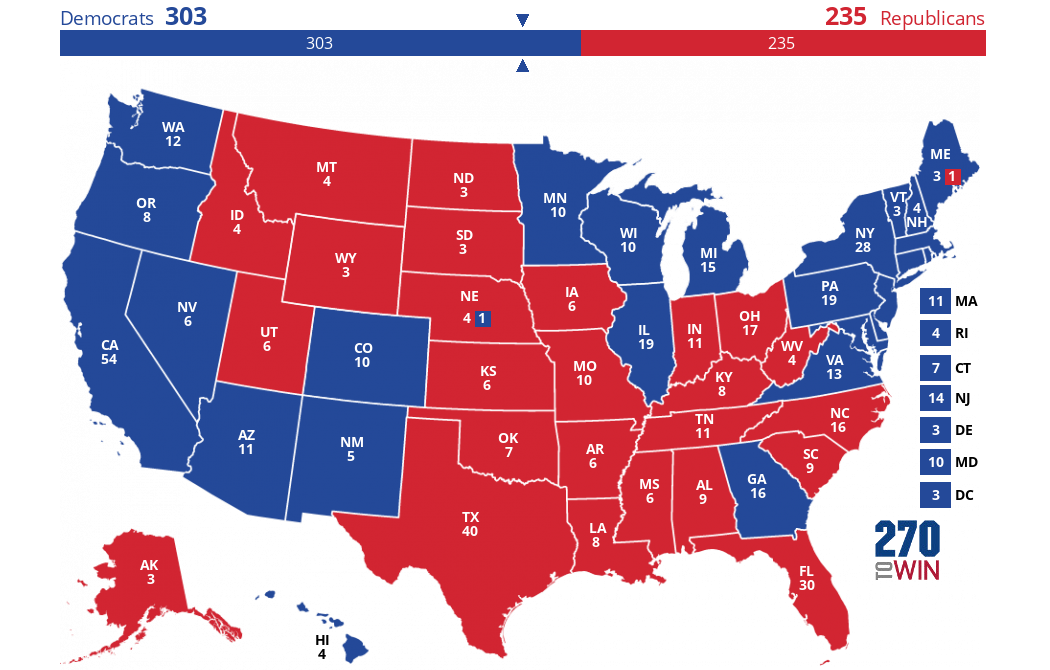Interpreting Presidential Poll Data: Latest Presidential Polls

Presidential polls are a valuable tool for understanding public opinion and gauging the potential outcome of an election. However, it is crucial to interpret poll data with caution and recognize their limitations.
Understanding the Limitations of Presidential Polls
Presidential polls are subject to various limitations that can influence their accuracy and reliability.
- Sampling Bias: Polls rely on samples of the population to represent the views of the entire electorate. If the sample is not representative, the results may not accurately reflect the overall sentiment. For example, a poll that oversamples certain demographics, such as older voters, may not accurately reflect the views of younger voters.
- Margin of Error: All polls have a margin of error, which is a statistical measure of the uncertainty in the results. This margin of error indicates the range within which the true population value is likely to fall. For example, a poll with a 3% margin of error suggests that the actual result could be 3 percentage points higher or lower than the reported result.
- Potential Inaccuracies: Polls are susceptible to various sources of error, including respondent bias, interviewer bias, and data processing errors. Respondent bias can occur when individuals provide inaccurate or misleading information, while interviewer bias can occur when interviewers influence respondents’ answers. Data processing errors can also lead to inaccuracies in the results.
Interpreting Poll Data and Drawing Meaningful Conclusions
To interpret poll data effectively, it is essential to consider the following factors:
- Sample Size and Demographics: A larger sample size generally leads to more reliable results. It is also crucial to examine the demographics of the sample to ensure it represents the population of interest.
- Poll Methodology: Different poll methodologies, such as phone polls, online polls, and in-person surveys, can produce varying results. It is important to understand the methodology used to assess its potential biases and limitations.
- Trends and Patterns: Examining trends and patterns in poll results over time can provide valuable insights into the dynamics of the race. A consistent trend in one direction may suggest a shift in public opinion.
- Contextual Factors: It is crucial to consider contextual factors that may influence poll results, such as current events, media coverage, and political campaigns. For example, a poll conducted during a major news event may reflect a temporary shift in public opinion.
The Significance of Trends and Patterns in Poll Results Over Time, Latest presidential polls
Tracking poll results over time can reveal significant trends and patterns that provide insights into the dynamics of a presidential race.
- Momentum: A consistent upward or downward trend in a candidate’s poll numbers can indicate momentum, which can be a significant factor in elections.
- Shifting Priorities: Changes in poll results over time can reflect shifts in voters’ priorities and concerns. For example, a sudden increase in support for a candidate may indicate a change in public opinion on a specific issue.
- Campaign Effectiveness: Trends in poll results can provide insights into the effectiveness of campaign strategies. For example, a decline in a candidate’s poll numbers may suggest a need to adjust their campaign messaging or tactics.
Comparing and Contrasting the Predictive Power of Different Poll Methodologies
Different poll methodologies have varying degrees of predictive power.
- Phone Polls: Phone polls were once the gold standard, but declining response rates and the rise of cell phones have limited their effectiveness.
- Online Polls: Online polls are increasingly popular, but they can be susceptible to sampling bias and inaccuracies. For example, online polls may overrepresent certain demographics, such as younger voters or those with higher levels of internet access.
- In-Person Surveys: In-person surveys are generally considered the most accurate, but they are also the most expensive and time-consuming.
It’s fascinating to see how the latest presidential polls reflect the public’s perception of the candidates. One factor that might be influencing these numbers is the style and content of recent presidential communication, such as the Trump news conferences , which have been widely discussed and debated.
It’s important to consider all these elements when analyzing the latest presidential polls and understanding the current political landscape.
It’s fascinating to see how the latest presidential polls fluctuate, reflecting the ever-changing political landscape. The dynamic nature of these polls reminds me of the Ethiopian steeplechase , where athletes push themselves to their limits, with each hurdle representing a new challenge.
Similarly, the presidential race involves navigating various obstacles and shifting public opinion, ultimately requiring a strong finish to secure victory.